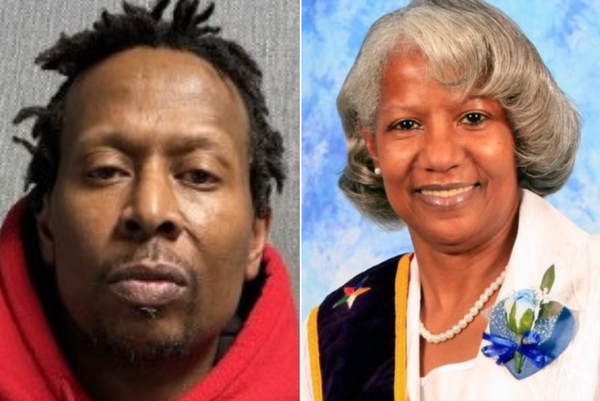DAMIAN Barr is that classic Scottish archetype, a lad o’ pairts. Maggie And Me – his 2013 book of growing up in the Thatcher era – won him the Sunday Times memoir of the year. He currently presents a new series – the seventh – of The Big Scottish Book Club on BBC Scotland.
His excellent new novel – The Two Roberts – is about the criminally neglected Ayrshire painters Robert Colquhoun and Bobby MacBryde. Barr is keen to revive and restore their critical status.
We talk on a sunny day in Brighton, where Barr now lives, amid his busy schedule promoting the new book. Nearby, there’s a statue of a local hero: the cheeky chappie comedian, Max Miller. As with Miller and his catchphrases, you can’t help being struck by Barr’s fluency of expression and humour. His conversation sparkles – it’s all clever stuff, no rubbish!
He tells me his own introduction to Scottish art was – predictably enough – Charles Rennie Mackintosh during a school trip to the 1988 Glasgow Garden Festival. But his first encounter with the Two Roberts would happen many years later.
“That was during lockdown when I saw tweets from the Dick Institute in Kilmarnock: an image of the painting Two Women Sewing (1953) by MacBryde. This is an animated oil with these women who seem to have a lot to say to one another as they pull a piece of blue and black cloth.
“Then I realised I’d seen and read about the Roberts in the past. Being Scottish, I had my antennae attuned to other Scots in the arts. The Roberts would pop up as footnotes in books about Francis Bacon and Lucian Freud.

He enthuses on their painterly strengths noting MacBryde was a master of the still life, indeed was jestingly known as MacBraque, in a reference to the French genius, Georges Braque.
Barr highlights that MacBryde’s still lives are not still: “His fish are flipping off a plate, the fruit is growing towards you.”
Given that food was rationed during the war, Barr suggests his paintings are “a kind of culinary porn”. And he speculates the works are a window into MacBryde’s domestic life with Colquhoun.
Barr extends his argument: “There’s another picture with a calf’s head where you can practically smell the soup he’s going to make from it.”
Turning to Colquhoun’s paintings, Barr details the “incredible mournful figures who have a Hebridean or an Ayrshire/Celtic air about them. They have Greek mask-like faces, mouths with a howling O.”
These Barr sees as speaking to a need for comfort, of kindly women who recognised the need for connection, particularly during the war.
The personalities of the Two Roberts were sharply contrasting. Barr sees MacBryde as the more extroverted, the one who wants to make you laugh.
“I describe his face as being like the sun as opposed to Colquhoun’s, which is more of a half-moon, one that wants you to see the other side of him. He makes you want to make him laugh. I think they were a good match for each other … until they weren’t. To be in their company was to be dazzled. Like a martini, they were much more than the sum of their parts.”
He laughs when I mention a key quote in the book: Never forget where you’re from, and he expands on this and why Bobby thinks “Everybody in Maybole is wrong”.
“They must get away from where they’re from to be themselves. There’s something universal about that: we all leave our parents, our homes, but not everyone has the option to go back or to stay.
“If you were them in 1933 and you’re attracted to men, you knew that blackmail, suicide, prison, and fleeing were your story. I think they must have felt incredibly lonely and that they had to get away to Glasgow first and then London. Eventually, they would have the opportunity to be themselves.
“That quote is both a warning and a caution not to get ideas above your station which is a theme in Scottish culture that continues.”
From Maybole to St Pancras, the Roberts made serious progression, a marked elevation, of the stations. I mention it’s been said that “living well is the best revenge”, and ask Barr if the two Roberts lived a bit too well in London:
“I think they had a lot of living to make up for. MacBryde certainly was malnourished. He grew up in a slum that was demolished, Colquhoun lived in a respectable council flat that’s still there – there should be a blue plaque on it.
“Remember they were traumatised by the war and the undeclared war on people like themselves. They lived under a lot of fear with no family safety net to fall back on.
“To me, it’s miraculous that they ever picked up a paintbrush, never mind scaled the heights of an establishment that was, in every single way, geared against them. There was also a sort of recusancy – they wanted to be the kings of Bohemia. And drink was a big part of that – as celebration, as coping mechanism – because they had more to cope with than anybody should have to.”
Theirs is a story of exile. The Roberts went to the imperial capital because it was where they could find fame and money. MacBryde wrote: “We must be careful to establish our legends before we die.”
He was already thinking about his posthumous reputation.
Barr underlines that their Scottishness – when they got to England – was a source of curiosity and they were often mocked and criticised for it. But, he adds, “they benefitted from the classlessness of London during the war”.
The Two Roberts brilliantly capture Glasgow in the 1930s. I ask Barr how he caught the period.
“I read Growing Up In The West and a lot of Scots fiction from that time that should really be on the curriculum. This is rich in showing Glasgow as an engine of the Empire that was diverse, prosperous, but also much less equal, much dirtier, busier, with the Clyde a key part of the city that it’s not now. And I tried to excavate a hidden gay Glasgow that’s always been there ...”
There’s a line in the novel that proposes Glasgow as a “city of stars in search of an audience”, and I ask Barr if he thinks this is still the case:
“Yes. Always! They’re like – I should be on that stage. Glasgow has a performative energy that you don’t get elsewhere.”
The book has plenty of laugh-out-loud moments. Colquhoun is called “The most promising young painter England has produced for a considerable time”.
Barr nods and grins, adding: “You see that in the Olympics where if you get a bronze, you’re Scottish. But if you get a gold, you’re British. We must go further and do better, more than the people south of the Border to be anointed with ‘Britishness’. And we see it in the lack of political respect towards our institutions.”
Another LOL moment has an English woman talking of “our own wee ben” in reference to a small hill in Sussex. There’s also a very cheeky line about Virginia Woolf’s sister, the painter Vanessa Bell. I ask Barr if he was worried about offending modern fans of the Bloomsbury set:
“No, not at all! Charleston in Lewes is about to display work by the Roberts, and they know how privileged the Bloomsbury folks were.
“Charleston is now putting on the first show of the pair in England since 1962. And the team there are honest about attitudes to the Roberts and their tensions with what they called ‘the Bloomsberries’. The curators want us to talk about that.”
Fathers don’t emerge too well in The Two Roberts and Barr is acute on “toxic” masculinity in Scotland, noting that Bobby and Robert construct their own idea of masculinity. Both had dads who worked manually, who were disappointed by their sons but should have been proud of them.
Women and gay men in the novel suffer at the hands of straight men. But Barr is quick to point out: “Nowadays, I think that Scotland has changed attitudinally faster and moved further in a more confident and inclusive way as a nation than England has. I’m sad at the spiral English politics is in right now, where the extreme right-wing tail is wagging the dog …”
In a contrasting uplift, he’s excited about current Scottish art, highlighting Trackie McLeod, also due to show at Charleston with the two Roberts. As for the state of contemporary Scottish writing, Barr is positive and nuanced and asks that we interrogate and broaden what it means to be a Scottish writer. He notes Ireland has trialled a universal basic income for artists and thinks Scotland should be doing the same.
“Artists have always helped us understand our Scottishness and Scotland’s place in the world. And we need more libraries. Especially in schools!’
Robert MacBryde and Robert Colquhoun: Artists, Lovers, Outsiders is on show at Charleston in Lewes from October 15 until April 12 2026
The Two Roberts by Damian Barr is out now, published by Canongate. For a full list of Damian's book tour dates, click here.







